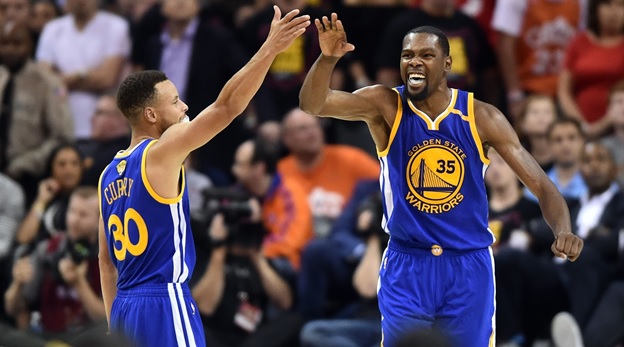Rise Of Analytics Help Trigger New Era In Sports
Advanced analytics have completely changed basketball and baseball strategy at the highest level. After decades of traditional wisdom ruling over the NBA and MLB, coaches and front offices were forced to adjust to new data sources which revealed valuable competitive insight.
Professional hockey went through a major change in the 1990s, with NHL betting odds favoring teams which made the switch to trap-based defensive systems. Since then scoring has almost returned to pre-trap levels as analysts attempt to utilize modern analytics to uncover the next big edge in hockey. And the best sports betting sites have had also had to adjust their betting lines accordingly.
NBA Analytics Created The Three-Point Revolution
Basketball might be the most extreme example of how analytics has influenced a sport’s strategy at the highest level. NBA champions of the 80s and 90s ruled the paint, including legends like Magic Johnson, Hakeem Olajuwon and Shaquille O’Neal. The action has moved far away from the key, with the three-point shot dominating the newest offensive schemes and strategies.
The record for three-point attempts was broken once again in the 2016-17 season, this time by the Houston Rockets, who bombed their way to a second-round playoff exit. The previous record holders, the Golden State Warriors, earned their second NBA championship in three years. No team has won a ring without elite three-point shooting for nearly a decade.
Basketball analytics have progressed to personal electronics worn by players around the clock, with players being monitored almost incessantly. Before the modern age of the three-pointer, a three-point shooting center or power forward was a rare luxury. Now, players who previously focused on banging in the paint must develop a jumper if they expect to start on most NBA rosters.
MLB Analytics Lead To Home Run And Strikeout Records
Perhaps the most stat-intense sport in the world, baseball has always recorded the history of their game meticulously. The advent of modern analytics and micro data has allowed statisticians to run through an abundance of data to determine the best hitting, pitching and batting strategies.
Some players experienced a huge drop-off in production when teams utilized heat maps to place fielders in the best possible location to cover the most likely destination of batted balls. Ryan Howard is a prime example. In the final five years of his career his batting average dropped to .226, far below the .275 average during his first eight years in the MLB. The opposition altered their fielding and pitching approach to better positionally combat Howard’s batting tendencies.
For batters, the latest analytics prize home runs over any other type of production, with strikeouts more accepted than at any time in baseball history. Contact hitters who put the ball in play used to be valued more than 25-homer sluggers with an increased propensity of striking out. Between 1994 and 2017, however, strikeouts more than doubled from 19,766 to a whopping 40,104, while homers increased from 3,306 to 6,105.
Modern MLB considers a strikeout as tantamount to a groundout in the grand scheme of things, despite the previous emphasis to put the ball in play. Home runs have become so valuable that players work on uppercut swings to increase their fly ball rate, with the intention of hitting the long ball.
NHL Analytics Attempt To Evolve Scoring
After firewagon hockey ruled the NHL during the 70s and 80s, a sudden shift in strategy lowered scoring in the NHL, and output of goals hasn’t quire recovered. Colloquially, this shift in the NHL was blamed on the 1995 New Jersey Devils, who utilized the trap en route to the Stanley Cup. The Detroit Red Wings deployed a version of the trap called the left-wing lock, which resulted in a pair of Stanley Cups in the late 1990s.
NHL lawmakers attempted to adjust the game by removing two-line offsides, reducing the size of goalie equipment, while clamping down on the endless number of clutches and grabs that slowed considerably the game. Teams have responded to these changes by improving defensive systems.
Compared to the NBA and MLB, the NHL hasn’t refined the utility of advanced stats. Corsi was initially hailed as an all-important number before the Pittsburgh Penguins won the Stanley Cup on underwhelming Corsi numbers last season. Lately, goal-based methods have been touted as the preferred option.
Nonetheless, advanced stats encourages some NHL players to milk numbers, improving their odds of scoring better contracts due to superior possession numbers. Instead of directing the puck deep into the corner, some will fire the puck towards to net to add another shot attempt to their totals.
Hockey’s the fastest team sport, increasing the difficulty of applying statistical models. As advanced NHL stats become more refined and better understood, fans can expect another change in the way the sport is played at the highest level. Maybe a return to the run-and-gun, high scoring days of yesteryear are close on the horizon.















